

Giovanni Battista Cremonini (c. 1550 - 1610) was an Italian painter of the Renaissance period.


Giovanni Battista Cremonini (c. 1550 - 1610) was an Italian painter of the Renaissance period.
Born in Cento, but mostly active in Bologna. His father Matteo Cremonini was also a painter. Giambattista was active in fresco decoration of houses, he was aided by his cousin, Bartolommeo Ramenghi. [1] One of his pupils was Odoardo Fialetti.
Among his works in Bologna are the following: [2]
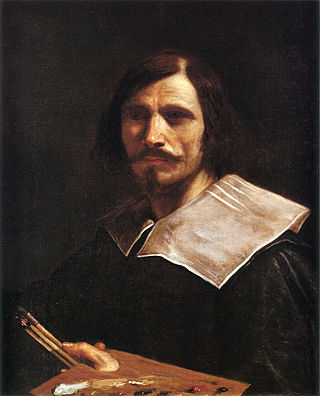
Giovanni Francesco Barbieri, better known as (il) Guercino, was an Italian Baroque painter and draftsman from Cento in the Emilia region, who was active in Rome and Bologna. The vigorous naturalism of his early manner contrasts with the classical equilibrium of his later works. His many drawings are noted for their luminosity and lively style.
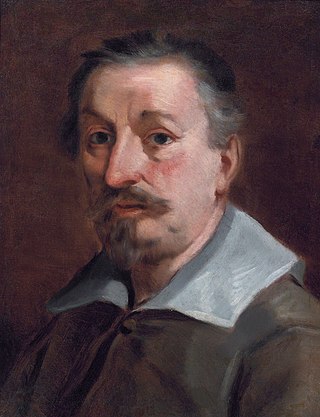
Francesco Albani or Albano was an Italian Baroque painter of Albanian origin who was active in Bologna, Rome, Viterbo (1609–1610), Mantua (1621–1622) and Florence (1633).

Giuseppe Maria Crespi, nicknamed Lo Spagnuolo, was an Italian late Baroque painter of the Bolognese School. His eclectic output includes religious paintings and portraits, but he is now most famous for his genre paintings.

Marcantonio Franceschini was an Italian painter of the Baroque period, active mostly in his native Bologna. He was the father and teacher of Giacomo Franceschini.

Domenico Maria Canuti was an Italian painter of the Baroque period, active mainly in Bologna and Rome. He was a major painter of fresco decorations. His ceiling decorations showed a mix of Bolognese and Roman influences.

Giovanni Gioseffo dal Sole was an Italian painter and engraver from Bologna, active in the late-Baroque period. Upon the death of Carlo Cignani, Gioseffo dal Sole became among the most prominent painters in Bologna, described as the Guido Moderno.

Lorenzo Pasinelli was an Italian painter active mainly in Bologna during the late Baroque period.

Baldassare Croce was an Italian painter, active during the late-Mannerist period, active mainly in and around Rome.

Vittorio Bigari was an Italian painter of the late-Baroque period.

Giacomo Boni was an Italian painter of the late-Baroque period, active mainly in Genoa.
Alfonso Rivarola was an Italian painter of the Baroque period, active mainly in Ferrara, where he was born. He is also known as il Chenda because of an inheritance he received from someone with that name.

Angelo Michele Colonna was an Italian painter of the Baroque period, active in Bologna, northern and central Italy and Spain. He is sometimes referred to as Michelangelo Colonna.
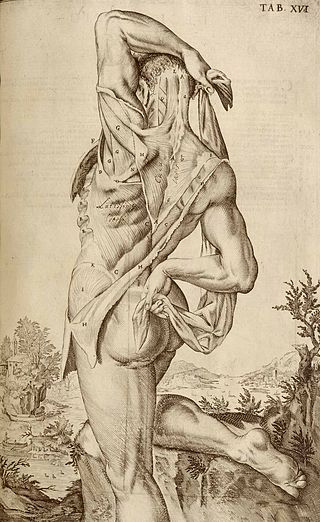
Odoardo Fialetti was an Italian painter and printmaker who began his training during the late Renaissance, and showed distinct mannerist sensibilities in his mid-career, adopting a much looser and more dynamic style in his later life.
Giuseppe Natali (1652–1722) was an Italian painter of the Baroque period and active mainly in Cremona and Lombardy.

Domenico Ambrogi was an Italian painter from Bologna of the 17th century, also called Menichino or Menghino del Brizio, after a master. Mainly known as a decorator of quadratura. He is also known as Domenico degli Ambrogi. He trained with Francesco Brizio, Bernardino Baldi, and Denis Calvaert.
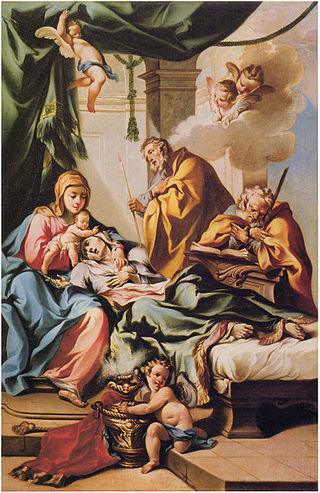
Francesco Monti was an Italian painter of the late Baroque.

The Basilica of San Giacomo Maggiore is an historic Roman Catholic church in Bologna, region of Emilia Romagna, Italy, serving a monastery of Augustinian friars. It was built starting in 1267 and houses, among the rest, the Bentivoglio Chapel, featuring numerous Renaissance artworks.

Annibale Mazzuoli was an Italian painter.
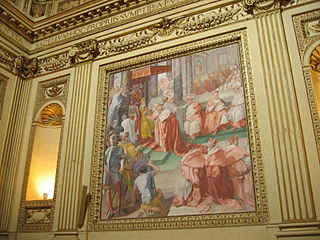
Pasquale Cati was an Italian Mannerist painter active mostly in Rome.

Emilio Savonanzi, nicknamed il Reniano was an Italian painter of the Baroque period, active mainly in and around his native Bologna. He trained under Guido Reni, hence his nickname.